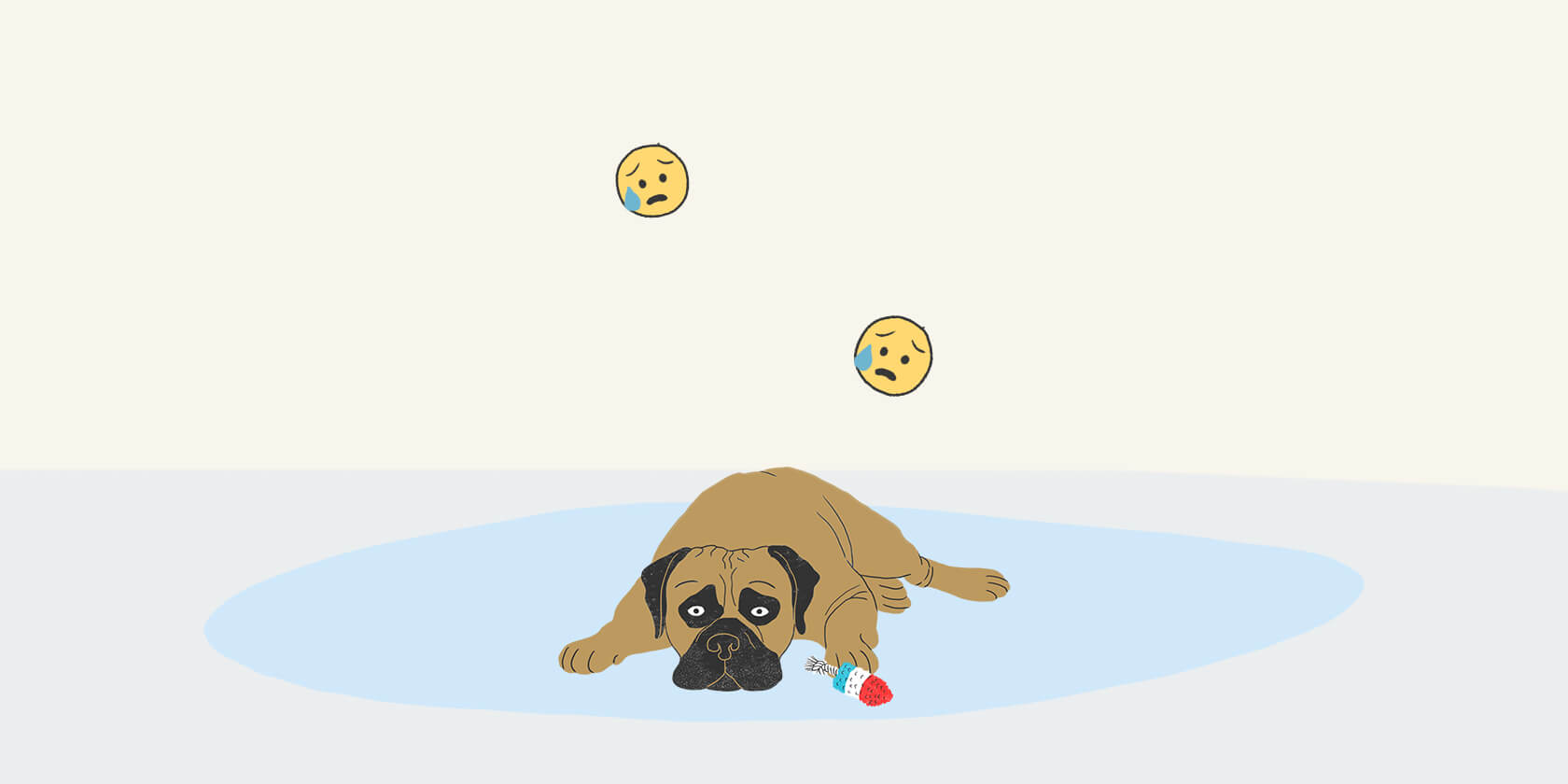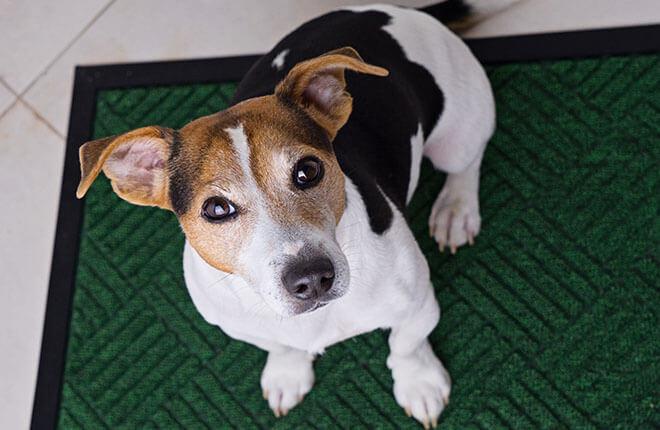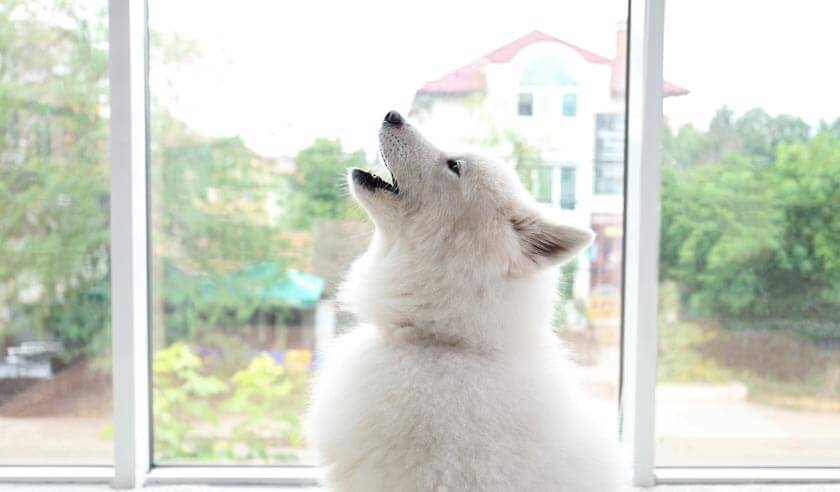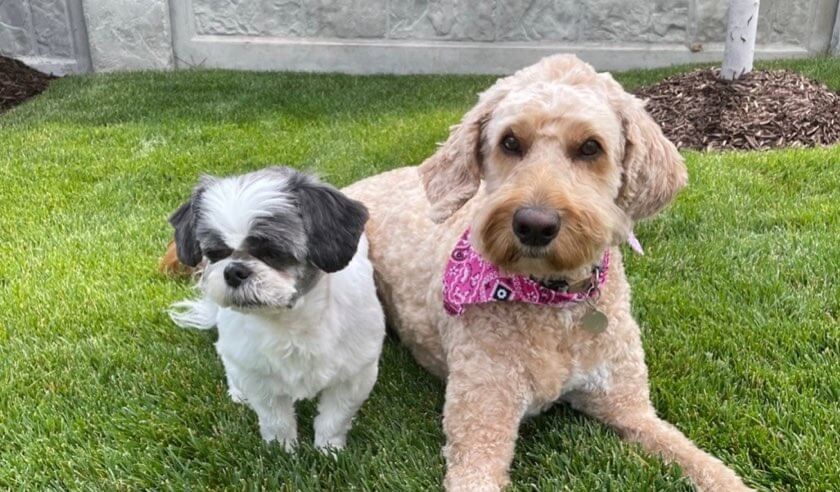While dogs rely primarily on body language to communicate, they sure can be quite vocal with their barking, howling, growling, and whining. The high-pitch sound of whines can be long and drawn out or short and staccato. You may even notice a difference in whining based on the intention behind the whine (and you can use this to your advantage).
It’s important to identify the underlying reason your dog is whining, as some require a visit to the veterinarian or connecting with a dog trainer or behavior consultant to address a larger issue. Let’s look at the most common reasons for dog whining and what you should do about it.

Reasons Dogs Whine
When trying to understand why your dog is whining, try to consider what their daily life looks like. Are they left alone for long periods of time? How old are they? Do they enjoy playing with toys? Are they low energy or high energy? These types of questions can help you determine the reason (or reasons) why your dog is whining.
Your Dog May Be in Pain
Pain or discomfort can cause a dog to whine. This may happen after an acute injury or due to chronic discomfort or pain that becomes worse over time. You may notice whining due to pain if your dog is getting up or trying to lie down, or when putting weight on a limb or making a certain movement.
Your Dog May Feel Anxious, Scared, or Stressed
Many puppies will whine in their crate or at night. It can be distressing for a new puppy to be in a new environment after leaving their litter. Whining is also a symptom of anxiety and stress, such as separation anxiety or noise aversion like fear of fireworks. When observed in combination with other body language, a dog’s whining can say a lot about their emotional state.
Your Dog is Alerting You to Something
Your dog may whine when they hear, smell, or see something that they feel you should know about. This could be wildlife rooting around under your home or nearby, a passing dog or cat outside the window, or anything they think it’s important to be aware of.
Your Dog is Excited
Whining can be a result of “high arousal,” or a high level of excitement. Many dogs get amped up when they greet people they love or when they anticipate a fun activity. It’s hard to not vocalize for some dogs when they’re super excited, and often this whining is punctuated by barking.
Your Dog Wants Something or Is Frustrated
Many dogs will whine when they can’t reach their favorite toy that’s rolled under the couch and is just out of reach. They’re frustrated, and whine to make it known that they need some help from their human who has the thumbs necessary to grab it. This reason for whining can be useful, especially if a dog whines to let you know that they need to go outside for a potty break in the middle of the night.
In some cases, however, it can become a demand behavior, just as barking can be. A dog might have learned that whining gets them attention and will start whining when they want you to pay attention to them, no matter if you’re busy doing something else.
Your Dog Is Bored
Boredom can cause whining and barking in dogs, as their pent-up energy needs somewhere to go. Boredom can be due to lack of physical exercise or missing enrichment and mental stimulation. Dogs who are bored will often engage in repetitive vocalization, often paired with pacing, destructive chewing, or obsessively licking themselves.
How to Stop A Dog from Whining
Whining is a natural dog behavior, which means that you won’t be able to stop it altogether, nor should you. It’s an important part of communication for your dog. However, if they’re whining because of boredom or learned to whine to demand attention, you can do some things to reduce nuisance whining.
Increase Your Dog’s Physical Exercise
Many dogs don’t get the physical exercise they need every day. But daily exercise doesn’t have to rely solely on the boring walk around the block. Get your dog moving more with nose work games in the house, such as hide and seek or find it, or introduce them to playing with a flirt pole in the yard. When starting or increasing physical exercise, it’s important to make sure your dog is healthy first. Check with your veterinarian if you’re beginning a new exercise routine, especially if your dog is obese or overweight or has other health conditions.
Increase Your Dog’s Mental Enrichment
Your dog’s brain needs exercise, too! Incorporate fun activities every day, such as snuffle mats, going on a “sniffari” where your dog can meander and sniff to their heart’s content, or using puzzle feeders for mealtimes. Training counts as mental enrichment, so try to schedule two or three minutes of training multiple times a day. It doesn’t have to be an hour-long training class — take advantage of television commercial breaks to practice your dog’s latest trick. Also, rotate your dog’s toys so they have something new to play with every few days.
ZPC-01551R1



.jpg)

